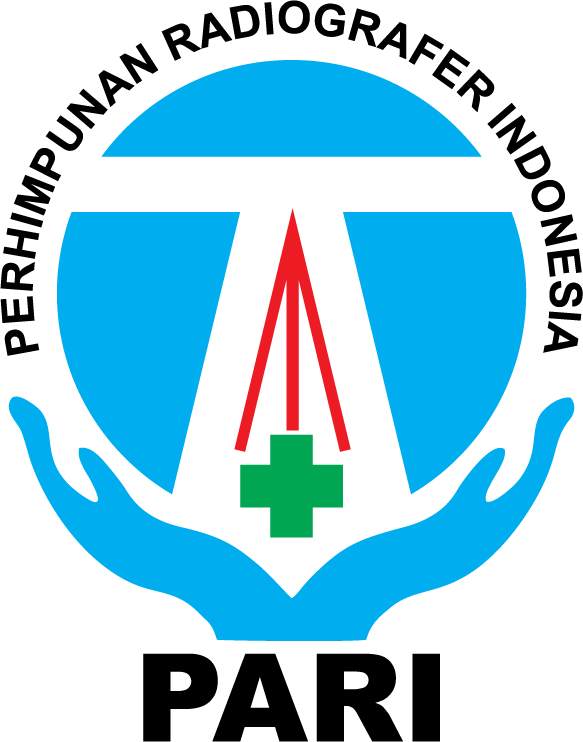Nilai Contrast to Noise Ratio (CNR) Radiograf Thorax PA antara menggunakan Grid dengan tanpa Menggunakan Grid
Abstract
Background: In the Thoracic Radiography Technique, applying the use of a grid to control scattered radiation almost never occurs, because the organ that is radiologically examined is classified as soft tissue dominance. Consideration of using grid is very important when the thickness of the thoracic organ exceeds 10 cm, thus potentially increasing scattering radiation which will affect the value of the Contrast to Noise Ratio (CNR). The purpose of this study is to examine the difference between the use of grid and non-grid for the chest radiography techniques in the context of CNR values.
Methods: In the study, a hundred healthy patient uderwent the chest posteroanterior (PA) radiographic examination, a half of the total patients was examined with grid whereas the rest without the grid embedded. All the resulted images were analyzed by means of the pixel value measurements at the specific organs of interest (costea and pulmonary tissues) in inside and outside of the lung organs, using 1,5 mm of ROI from Dicom software. The statistical analysis of the CNR values was performed by comparing the results between the groups.
Results: There is a significant difference in the contrast values on the PA radiographs between those using the Grid and without using the Grid (p-value <0.001). The average contrast value on the chest radiograph with Grid is 2283.60, while without Grid is 1878.58. In the Noise values, it also deems significance (p-value = 0.001). The average of the noise values employing the Grid in the technique is 25.32, whereas without Grid is 17.84. In the Contrast to Noise Ratio (CNR), the diference seems to be significant (p-value <0.001). The average CNR radiograph of the PA chest using the Grid is 100.79, while the non-grid is 125.62.
Conclusions: The application of the grid in radiography technique gives significant difference in the image results (contrast, noise, and CNR), when compare to the radiographic techniques without the grid. Using the grid in the Technique improve the qPA-thoracic quality of the chest images.
Keywords
Full Text:
PDFReferences
Bontrager, K. L., & Lampignano, J. P. (2014). Textbook of Radiographic Positioning and Related Anatomy (8th ed.). Elsevier Mosby.
Bruce, W. long, Jeannean, H. R., & Barbara, J. S. (2012). Merills Atlas of Radiographic Positioning & Procedures.
Bushong, S. C. (2013). Radiologic Science for Technologist : Physics, Biology, and Protection.
Carlton, R. R., & Adler, A. M. (2001). Principles of Radiographic Imaging An Art and Science 3rd Edition (Third Edition).
Forster, E. (1985). Equipment for Diagnostic Radiography. MTP Press Limited.
Huda, W., & Abrahams, R. B. (2015). Radiographic Techniques, Contrast, and Noise in X-Ray Imaging. American Journal of Roentgenology, 204(2), 126–131. https://doi.org/10.2214/AJR.14.13116
WHO. (2016). Communicating Radiation Risks in Paediatric Imaging : Information to support healthcare discussions about benefit and risk (World Health Organization, Ed.).
DOI: https://doi.org/10.31983/jimed.v6i2.5653
Article Metrics
Refbacks
- There are currently no refbacks.
JURNAL IMEJING DIAGNOSTIK by http://ejournal.poltekkes-smg.ac.id/ojs/index.php/jimed is licensed under a Creative Commons Attribution-ShareAlike 4.0 International License.

.png)
.png)
.png)
.png)
.png)
.png)
.png)











